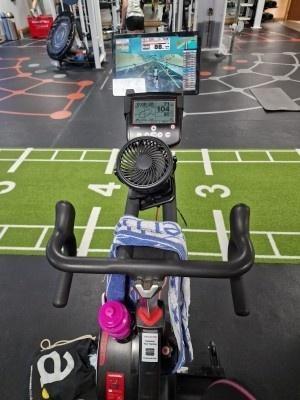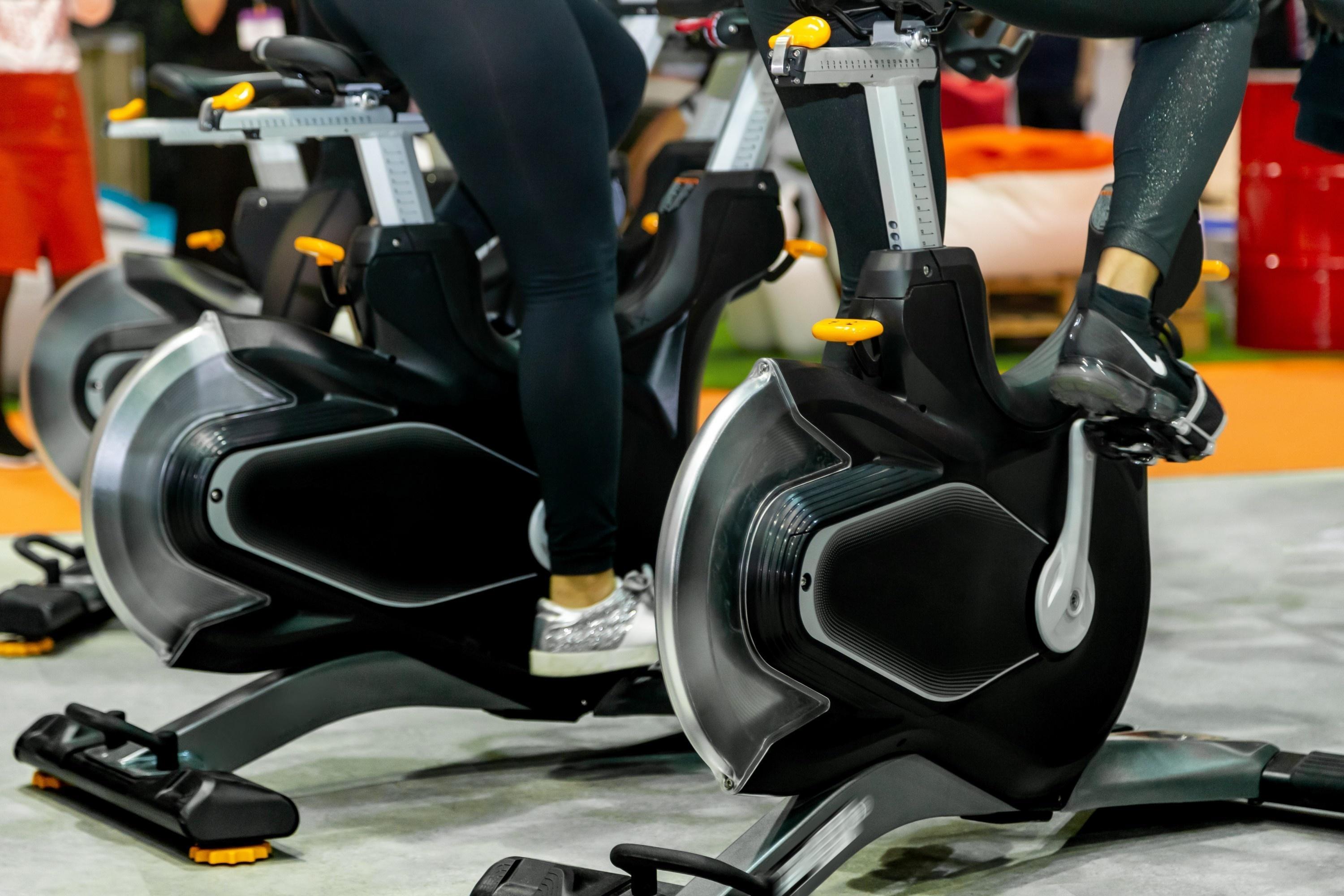Living with Ehlers-Danlos Syndrome often involves walking a very fine line between being well and not. If you're also training as an athlete, this is compounded by the inevitable time when you pick up (one or more) injuries, or have to navigate a flare-up, which impact your training.
Over the years I've been training I've had to work around many issues, from short term painful joints and flare-ups to full-body whiplash resulting from a car accident which took a lot longer to recover from. One thing that has been a constant, however, is my dedication to my training and always finding a way to do something.
For me, consistency is everything.
As soon as I pull back from training, within a few weeks I start to notice my joints becoming more painful and within a month I start to experience a marked increase in my hypermobility, fatigue and perhaps more importantly, a sliding into a deep abyss of painful mental states.
Here's some of the key aspects I have found to be important in helping me to stay focused and cross-train while I am carrying an injury.
Ruth's big hairy caveat: Sometimes, you do literally need to stop training all together in order to recover from something, whether physical, mental or a combination of both. This happened to me during a particularly bad health crash, and it is absolutely OK, and you are NOT a failure if you need to put your training on pause to give yourself what you need. What is important in my opinion and experience is being intentional about that break and setting aspirations for where you would like to be down the line, even in you don't know exactly when that will be. If you ever feel like you're in a cycle of training and crashing, thing carefully before you carry on down that spiral. Feel free to drop me a message if you're stuck here, I'm happy to share my experiences of escaping the black slopes of doom!
Knowing what's going on
The first thing I have to do when something is restricting my training is to be very honest with myself as to what's actually wrong, and what my revised boundaries are.
The only way you can really do this fully is to know exactly what the problem is, so for me, getting a speedy diagnosis and access to professional advice is imperative. Firstly you need to figure out if it's a major injury which is going to need medical attention, or something you can treat at home. This might mean seeing a primary care doctor, a consultant, a physiotherapist - whoever you trust to both understand your condition and to be able to determine what's causing the problems you're experiencing. Luckily in Suffolk we have a wonderful self-referral physiotherapy service through Allied Health Professionals Suffolk.
I've had great results using the service, generally being triaged within 24-48 hours and getting advice and recommendations straight away, with an appointment within a week or two depending on the severity of the issue. I'm also very fortunate to have private health insurance through my employer which has allowed me to access specialist services quicker if I needed to.
Setting your 'safe zones'
Once you have been able to see a specialist, or even before that if you have a good sense of your body and what's wrong, it's important to determine what your 'safe zones' are for training. This might be ranges of movement, heart rate zones, types of activity, maybe even times of day when it's best for you to train - it will depend what the issue is that is impacting on your training.
For example, at the moment I have a frozen shoulder and I have agreed with my physio that my safe zones are:
- Isometric movements (against a wall where the muscles work but your arm doesn't move)
- Never above a 5/10 pain level
- In front of the body up to a maximum of shoulder height, no additional weight
- Out to the side up to shoulder height, no additional weight
- Loading through straight arms in front - for example deadlifts
- Minimise shoulder rotation, especially under strain
- Minimise over the head or behind the body plane movements
Modify, modify, modify
Once you know what is going on and what your safe zones are, you can assess the training you're currently doing and figure out:
- What you can keep as-is - for example deadlifts are fine and don't cause any problems
- What you can keep but need to modify - for example I can do load bearing squats but only with dumbbells or kettlebells
- What you must not do - for example tricep dips and clean and jerk lifts are out of the question!
Note: If you are severely limited to what you are able to do due to your injury or your condition, I highly recommend that you treat the exercises that your physiotherapist gives you (I've never known them not to give you at least one!) as your training session. Get your kit on, and prepare just like you would for your sport. Get the music pumping (if that's your thing), and do your exercises as your training session, religiously. This has really helped me when I've been in phases where I'm severely limited on what else I can do and has really supported my mental health because I felt like I was at least doing something to get me back on track. One day at a time.
A change of tack
Sometimes an injury or flare up might necessitate completely changing some aspect of your training. At the moment I have the delightful combination of a problematic foot and a dodgy shoulder, which means I can neither run (my main cardio activity) or swim (my fall-back activity!). Thanks to my My Pro Coach plan I was able to ask a coach to assign me a bike-only program which was about the same intensity as an ultra running plan (but my legs and backside are not thanking me for that one bit!)
Unfortunately this can be quite common with EDS, especially when there happen to be more than one joint involved in whatever the problem might be.
Replacing like for like
 Firstly, try to replace like for like when it comes to intensity and muscle groups used. If you're used to running four times a week, replacing it with something that is quite sedate will not help you to maintain your cardiovascular fitness or run-specific musculature.
Firstly, try to replace like for like when it comes to intensity and muscle groups used. If you're used to running four times a week, replacing it with something that is quite sedate will not help you to maintain your cardiovascular fitness or run-specific musculature.
It's a great opportunity to get creative and explore new things!
Some examples that I've come across or tried myself include:
- Static bike training (my current life .... I'm doing all my training in Spin classes or playing Zwift on the bike in the gym!)
- Elliptical trainer - in standing or when seated. I have the Cubii Pro (affiliate link) under my desk since my foot started playing up, which is completely non-weight-bearing.
- Ringfit for Nintendo Switch - it has various 'assist' modes which allow you to toggle on/off various body parts if you're not able to train them
- Swimming - find a good training plan if you're using it to replace cardio, don't just float up and down the pool and expect to retain your fitness!
- Seated cardio dance / aerobics - check YouTube for lots of inspiration at various intensity levels
Find a lower intensity option
Sometimes you can still do the thing you usually do, but at a lower intensity. For example you might be able to swim, but just not do front-crawl. Or maybe you can't run but you can power-walk.
If you are still able to do something that is vaguely similar to the activity you are training for this is a huge help. It ensures the muscle memory is retained, keeps the general musculature moving in similar movement patterns. It is also helpful for your mental states if you are able to work with doing it slower or in a different way, as a means to getting well enough to get back into it.
Cross train skills to support your sport
My trainer told me it was a good thing I hurt my shoulder because now every day is leg day (as I quietly died in the corner!)
In a way, she's right - one of my biggest weaknesses in my running has been my posterior chain. It was identified in my gait analysis and definitely showed its head when I was deep in training for Endure24 last year. Now we get to focus almost exclusively on it - albeit with some very heavy modification going on - for several months. I think she's more excited about that than me, it has to be said!
Sometimes an injury can be a good thing, because you can use the cross-training to work on specific aspects of your body or fitness which are directly relevant to your sport, but in a different context. Consider how you can use the time to train effectively for what your sport needs of you.
It might even be that this means you're working on navigation skills or taking some coaching qualifications while you recover the ability to use your body out in the field - if that helps you with your sport, go for it! See the time as a blessing to help you grow in areas you wouldn't usually make the time for, but keep your end goal in sight.
Conclusion
Hopefully that's given you a few ideas for how you can cross-train when you're struggling with an injury or flare-up. It's a really sucky time, so do remember to be kind to yourself. How have you found cross training helpful? Leave a message below in the comments!







